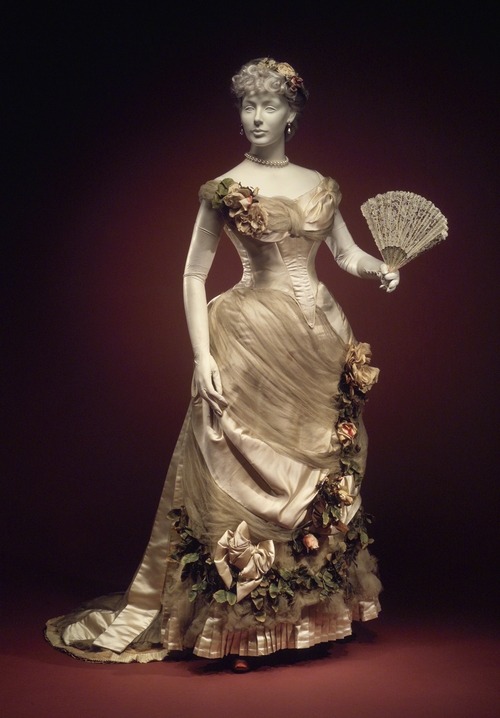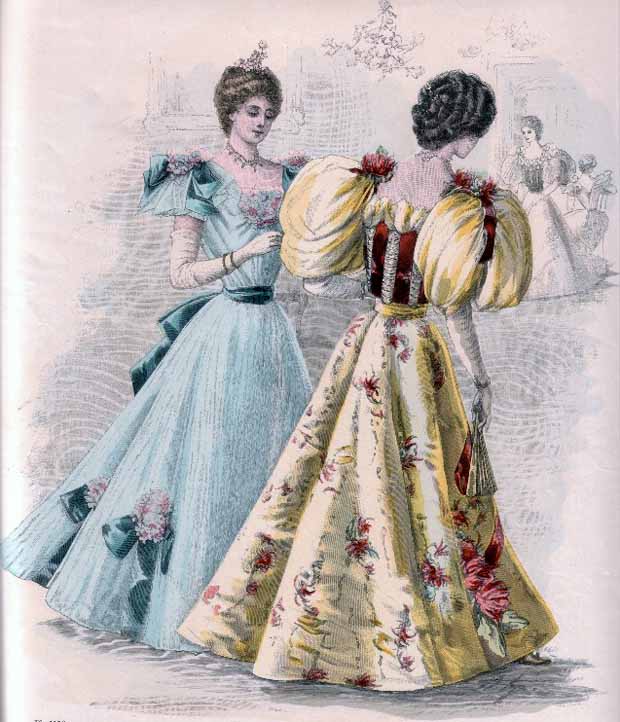After more than 25 years of hard wearing, ours were well past needing to be replaced.
 |
| Old Waltz of the flowers costumes |
I made new tutus for the Waltz corps de ballet, Waltz demi-Soloists, Dew Drop fairy, and the Sugar Plum fairy.
The artistic director wanted copies of the original costumes not new costumes which meant that I had to find tutu net in the same colors. I took the original tutus to the store and tried to find matching colors but had little luck.
| Old Dew drop bodice, Old Sugar Plum, Old Waltz demi-solist costumes |
The Dew Drop fairy was easy as white and white sparkle tutu net is widely available. The pink tutu net for Sugar plum was also not a problem. Scott choose a lovely dusty rose velvet for Sugar plum's new bodice and basque. He also designed the new demi-soloists to be up-side down bachelor buttons in shades of Celedon green, light sapphire blue, Williamsburg blue and gold.
Scott and I tried contacting every supplier of tutu net we could find but were unable to find the colors we (thought) we wanted, when we wanted it. Standard tutu net comes in a fairly limited range of colors: white, ivory, rose pink, hunter green, black etc. Everything is possible with enough time and money (i.e. special ordering and special manufacturing) but our budget did not run to that. The solution was to use tulle for some of the layers, as it was readily available in more suitable colors and hand dyeing lots of white netting. The only orange I had been able to find was extremely bright Halloween orange, which was not what was needed.
 |
| Hand dyeing netting for waltz corp tutus |
"How hard could it be"? were my famous last words.
Well I soon found out. A few tips to the novel, tutu net dyer:
1) Go to the RIT site and read all the instructions, many times, write them down carefully before starting
2) Do your dying during day-light, not starting at say 9 p.m. after your children have gone to bed
3) Always do several test strips to make sure you get the color you want, not what you think it is on the screen.
4) When washing the netting after dying, use even less soap then you think you need.
I ran the rinse cycle a second time and that took care of the problem. I then had to hang the net up to dry as it could not go in the dryer. In the end the color was a perfect match to the corp de ballet tutu if not the original. I felt a bit like a crazy Rapunzel with all that orange netting.
 |
| Eleven yards of hand dyed tutu net, and the old Waltz tutus |
 |
| New Waltz corp de ballet tutu |
 |
| Waltz demi-soloist tutu |
 |
| New Sugar Plum tutu before tacking |
 |
| New Waltz Demi-solist costume, designed by Scott Dolphin, tutu by Hilary Sharp |
 |
| New Sugar Plum tutu, designed by Scott Dolphin |
 |
| New Sugar Plum Bodice, design Scott Dolphin |
 |
| Second Sugar plum bodice, plate and tutu by Hilary Sharp |
and an exact copy of the Marzipan girl's costume (see below). The original costume was too fragile to be altered any more. The original costume was made of a lilac taffeta and a light two tone teal fabric (possibly a sateen ) and had a Schifli lace overlay.
 |
| Bodice of original Marzipan |
At this point I was a pro at dying fabric, but it still took me about six hours of making test strips, and then dying the actual fabric to get the right shade of teal. The result was very convincing and it fit the dancer perfectly.The original costume had been made for a much smaller dancer and so was much too short in the bodice and skirt for the other dancer. Dancing is hard on costumes and this costume had been in constant use for over 15 years being let out and taken in for many dancers. Having a second costume in a different size, is always helpful.
Initially there was a plan to update the Waltz corps de ballet bodices but this had to be put off due to time and budget constraints. To see what the costumes looked like go to Nutcracker on stage
 |
| New Marzipan dress |
 |
| Original Marzipan dress |













